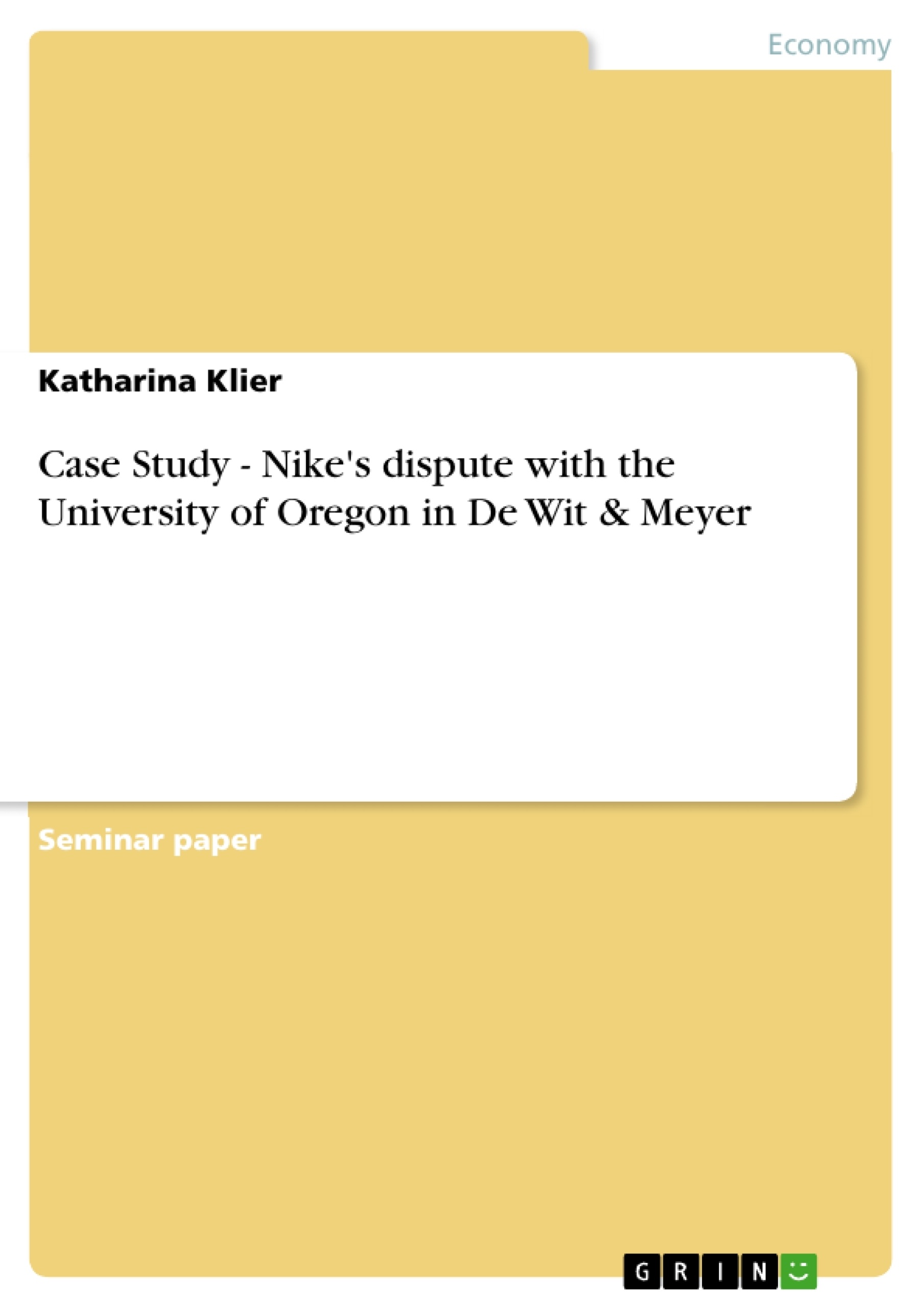Executive Summary:
This report analyses the actual strategic position of the sports company Nike and carries out the development of the global sport’s industry and its influences on Nike. In order to analyse the external and internal influences, this report will commence with Porter’s value chain model and his five forces framework to critically evaluate the reasons for Nike’s strategic decision to outsource its manufacturing factories to Asia. The reader will also achieve an understanding of the environment in which the company operates, which will be enlarged in the following part, by evaluating the advantages of international trade for Nike.
The second part of this report will concentrate on two of Whittington’s schools of thought and concentrates on Nike’s systemic approach to its strategic position. Finally, Mintzberg ́s cultural and environmental schools of thought will be discussed and compared to illustrate Nike’s development between the years of 1996 and 2000.
Table of content
EXFCUTIVF SUMMARY
QUESTION ONE:
A) PORTFR’S VALUF CHAIN
b) PORTFR’S FIVF FORCFS FRAMFWORK
c) Bfnffits for Nikf from Intfrnational Tradf
OUFSTION TWO:
a) Whittington’s systfmic and procfssual schools of thought
b) Application of thf systfmic school of thought to Nikf
OUFSTION THREE:
a) Mintzbfrg's cultural and fnvironmfntal schools of thought
b) Application of Mintzbfrg's cultural school of though to Nikf
RFFFRFNCF LIST
a) Primary Sourcfs
b) Sfcondary Sourcfs
- Quote paper
- Studentin Katharina Klier (Author), 2011, Case Study - Nike's dispute with the University of Oregon in De Wit & Meyer, Munich, GRIN Verlag, https://www.grin.com/document/184757
-

-

-

-
Upload your own papers! Earn money and win an iPhone X. -

-
Upload your own papers! Earn money and win an iPhone X. -

-
Upload your own papers! Earn money and win an iPhone X. -

-
Upload your own papers! Earn money and win an iPhone X. -

-
Upload your own papers! Earn money and win an iPhone X. -

-
Upload your own papers! Earn money and win an iPhone X.

